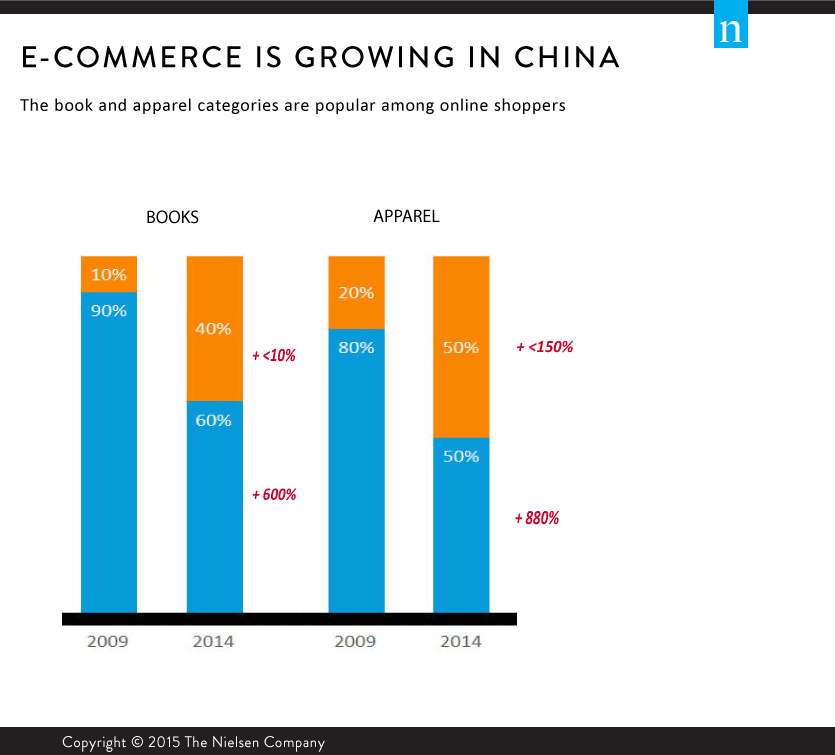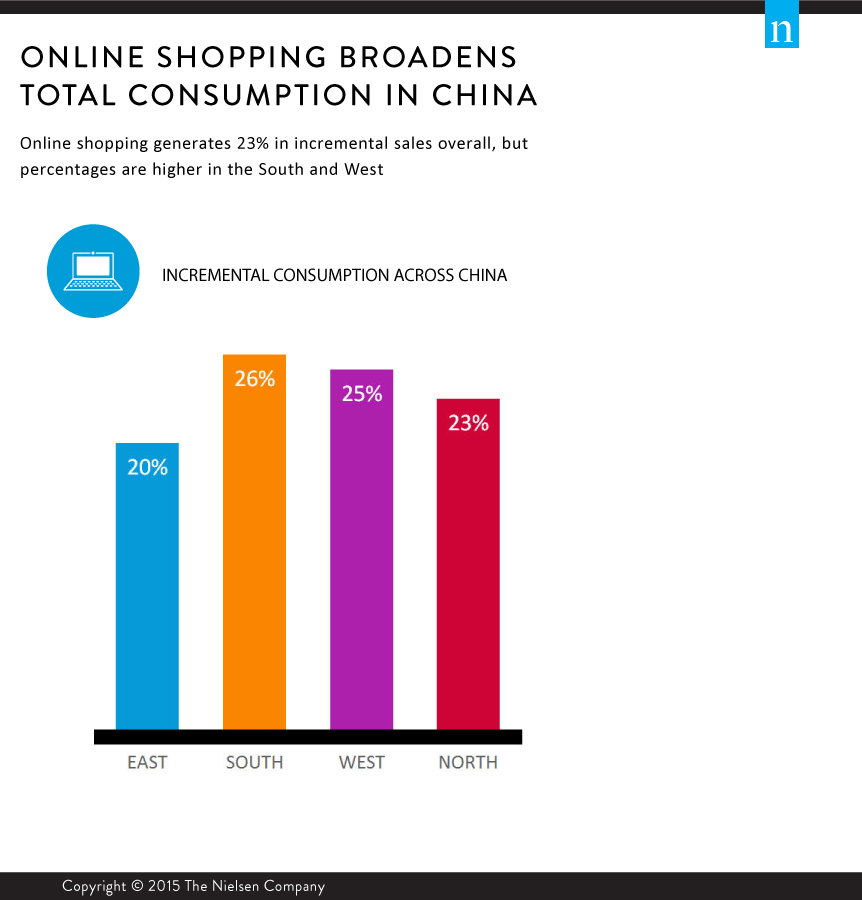You’d have to be living with blinders on to see the impact that technology is having on consumer behavior in today’s world. But despite the myriad ways digital is shaping tomorrow’s landscape, it’s impossible to overstate the growing significance of e-commerce, especially in the Asia-Pacific region. There, as many as 37% of consumers shop online, well above the global average of 25%. The real pacesetter in the market, however, is China, where more than 46% of consumers are actively making purchases via the web.
While e-commerce penetration in China is a global standout, online sales are even more noteworthy. In fact, Chinese retail sales have doubled over the past five years, but online sales have grown tenfold. That growth has effectively pushed online sales from 2% of total retail sales in 2009 to 11%. What’s more, the pool of online shoppers is getting bigger, tripling from 130 million five years ago to 380 million today.
But China isn’t just the largest market for e-commerce. It’s also one of the most evolved, and so are its consumers. That’s because they’re not just adept at finding an item online and clicking a button to buy it. They’re more likely to use online or mobile coupons than the global average and they don’t limit their purchases to traditional consumer goods. In fact, the online sale of trips and virtual products and services grew 114% in 2014 alone.

‘E’ is For Incremental
The other compelling aspect of China’s e-commerce market is that its growth isn’t coming at the expense of brick-and-mortar sales. In looking at the findings from Nielsen’s recent online surveys for the China region, we see that online sales have actually added 23% to total sales. In the south and west, incremental sales are even higher, at 26% and 25%, respectively.

In addition to highlighting incremental sales, the e-commerce data supports the premise that consumers are no longer simply shopping one channel. The convergence of on and offline is breaking previous boundaries and broadening the consumer’s shopping basket. So as consumers continue to integrate multiple channels into their lives, it’s critical that manufacturers and retailers consider the consumer’s holistic path to purchase.
In looking at what today’s consumers look for from their shopping experiences, three key traits are at the forefront: convenience, assortment and experience. By assessing these needs, manufacturers and retailers can determine specific strategies for their on- and offline channels to best meet consumer desires across all possible touch points.
STRATEGIES TO INTEGRATE ON- AND OFFLINE EFFORTS
For brick-and-mortar operations, embracing online as a complement rather than a replacement is critical. For example, if an established retail store were to consider a geographic expansion, it could gain a sense of where the greatest needs are by first expanding online. By identifying where the greatest concentrations of customers live, the store would know exactly where stores were needed most. Additionally, online retailers can leverage offline expansions to extend distribution capabilities and enhance consumers’ shopping experiences.
E-commerce can also help retailers meet specific consumer habits. For example, on- and offline sales data show that certain products perform significantly well online: 22% of impulse food items are sold online exclusively, as are 13% of baby products and 12% of personal care items. The other benefit to e-commerce is that it’s available to everyone, unlike physical stores, which many consumers in rural areas don’t have direct access to.
With the dawn of digital, consumers have myriad opportunities to meet their needs and their schedules. They no longer have to plan ahead, make a list and handle their purchase decisions right in the store. They can (and will) use all channels to collect information, compare products and prices, look for discounts and capitalize on convenient options that best meet their individual lifestyles. This, in turn, means that manufacturers and retailers will need to develop specific and differentiated channels in order to meet and engage with their customers on all fronts.
For additional insight into Chinese consumers, join Nielsen at Consumer 360 in Shanghai.



